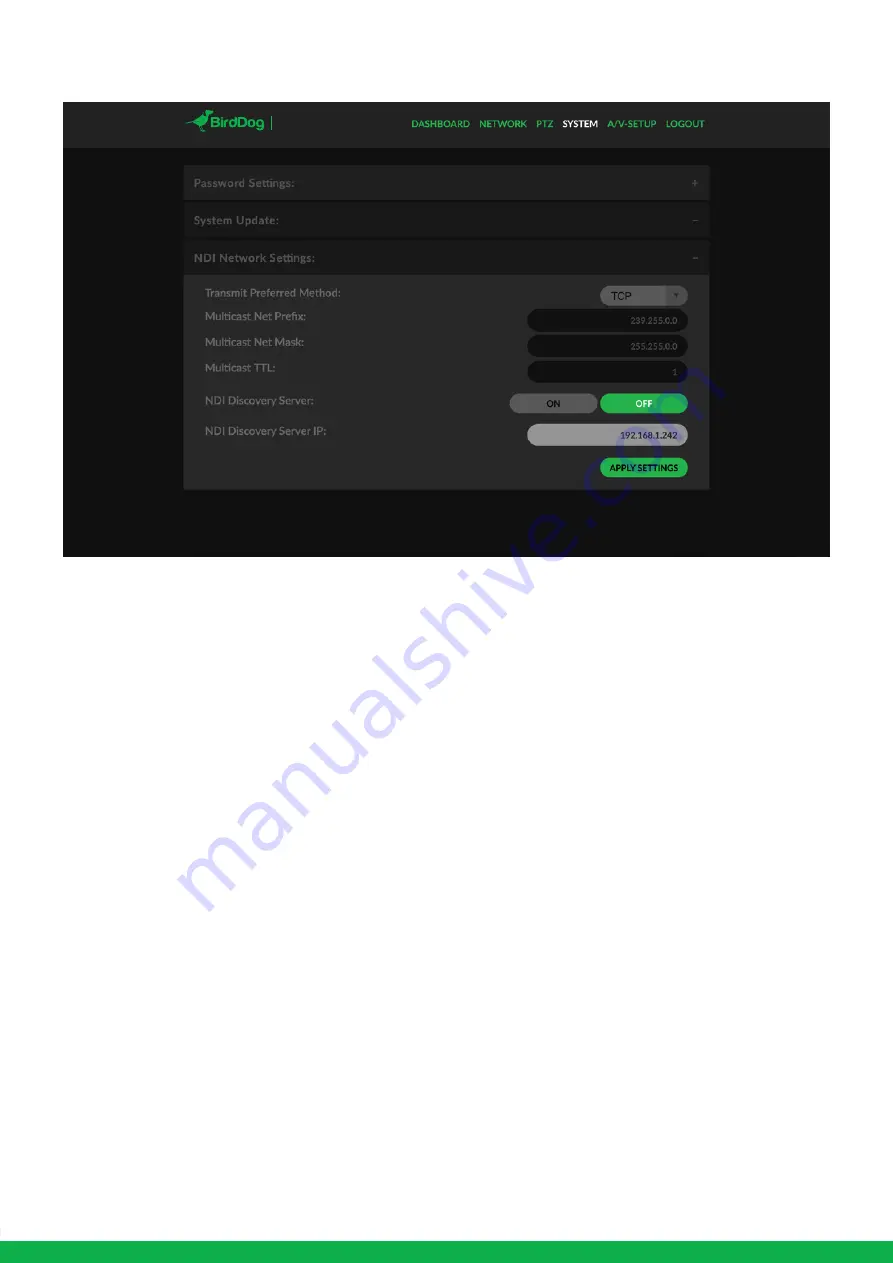
9
System update
The P400 is updateable via the web interface. Please check
the below address regularly to ensure you have the latest
firmware available for your device.
Having the latest firmware ensures you have all the latest
features and performance updates to get the most out of
Eyes P400:
bird-dog.tv/firmware-updates
After downloading the latest firmware release, navigate to
the settings tab on the web configuration console and click
on Choose file... select the firmware update file and press
the update button.
NDI NETWORK SETTINGS
Transmit Preferred Method
TCP
TCP is the default transmission method for NDI, it operates
well within local networks with predictable latency and
limited jitter. BirdDog recommends that TCP be used for
typical applications, and only using alternative transports
for specific reasons.
UDP
UDP is recommended for networks where there is extended
latency from one end to the other. The nature of UDP
means that it does not need to receive a confirmation of
each packet being received successfully – vastly improving
performance on distance WANs. UDP can have some
consequences if there are other issues on the network such
as jitter or lost packets as it will not inherently resent a lost
packet.
SYSTEM
Multicast
Multicast is especially useful for use-cases that require a
single source to be received on multiple receivers simulta-
neously. Utilising Muliticast offloads the distribution of the
NDI A/V data packets from the BirdDog P400 to the
network infrastructure. You should take care to ensure your
network is specifically configured to support Multicast as
using it on an ill-prepared network can create unintended
network problems.
MultiTCP
MultiTCP is a new NDI transport method that allows users
to send NDI video over poor network topography such as
WAN (Wide Area Networks) without experiencing issues
such as packet loss and lost frames. In the past in order to
send NDI video over a WAN the UDP transport was the only
option available. UDP solved some issues of WAN applica-
tions by allowing the NDI video to travel without dropping
masses of frames but results in dropped packets being
missed which could cause unstable video. UDP also places
more performance demands on devices sending and recei-
ving the signal.
MultiTCP employs a new method of sending TCP packets
whereby it opens a mass of TCP connections over the WAN
and uses them in a ‘round robin’ manner, this allows each
individual TCP connection enough time to acknowledge the
receiving packet, confirm nothing is lost and prepare for the
next one before it’s sent the next TCP packet in the round
robin. This is similar to a RAID setup in traditional storage.
EYES P400





























